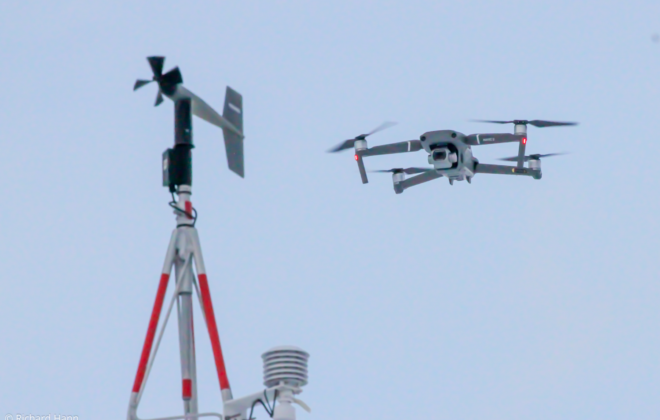My Secondment at SIOS: Bridging NTNU and Arctic Research
As a senior researcher at NTNU with over seven years of experience flying drones in the Arctic, I was excited to get the opportunity to take a secondment at Svalbard Integrated Arctic Earth Observing System (SIOS) in Longyearbyen, Svalbard. My stay at SIOS was driven by several key objectives: (1) enhancing collaboration between NTNU and SIOS, (2) addressing data management challenges with drone-collected data, and (3) exploring the potential for a citizen science project. Overall, this would be an excellent opportunity to develop synergies and to learn more from each other.
The first goal of my secondment was to foster stronger ties between NTNU and SIOS. During my time at SIOS, we identified several new stakeholders at NTNU who expressed interest in collaborating with SIOS. Notably, three labs with relevant infrastructure were highlighted: The UAV Lab, which provides a wide range of drone platforms; The Applied Underwater Robotics Lab, which can offer a large variety of autonomous underwater and surface vehicles; And the SmallSat Lab, which offers access to the NTNU CubeSat’s hyperspectral imagery. These three labs offer significant resources and expertise that are now included in the new SIOS access call, making them available to SIOS partners. In order to fast-track the collaboration, the three labs have been included as available infrastructure in the SIOS Access Call 2024 – this call provides funding for researchers to utilize SIOS’s partner infrastructures.
The second goal was to develop a process to integrate drone-based data into the SIOS data portal. The motivation for this task has been sparked by my involvement in previous State of Environmental Science in Svalbard (SESS) reports – where we have discovered that there are considerable challenges with drone-based datasets. In short, such datasets are typically not shared in a FAIR (Findable, Accessible, Interoperable, Reusable) manner and are often not archived at all. In order to overcome this, I worked together with SIOS to understand their paradigm for data storage and to develop an approach to make drone-based data compatible with it. In close collaboration with SIOS, we have developed a procedure to translate the most common drone results into NetCDF format, facilitating seamless integration and sharing of data within the SIOS community. This is a key step to improve the quality and value of drone-based datasets, promote the observational pyramid in remote sensing, and enhance the robustness and accessibility of Arctic research data.

An intriguing aspect of my secondment was the exploration of the idea for a citizen science project. My idea was to use drone photos taken by tourists to monitor glaciers. This would offer an effective way to obtain frequent datasets that could be used to estimate high-fidelity glacier velocities of calving rates throughout a season. I engaged with several tourism companies operating in Longyearbyen, as well as VisitSvalbard and the Association of Arctic Expedition Cruise Operators (AECO). Unfortunately, I quickly discovered that all tourist companies have guidelines that actually do not allow guests or guides to fly drones. However, in discussion with the companies, several opened up the possibility for researchers to join their trips and to fly drones for science projects – an idea that I may want to follow up on in the future. Although the original citizen science concept couldn’t be realized, this alternative presents a promising opportunity for future research ideas.
The three months at SIOS flew by very quickly but have brought forward several new synergies and also future initiatives to be followed-up. The experience not only strengthened the relationship between NTNU and SIOS but also addressed a key challenge for drone-based in the science community. I give my gratitude to the SIOS team for their support and collaboration. Moving forward, I am eager to continue working together, building on the foundations laid during this secondment.



